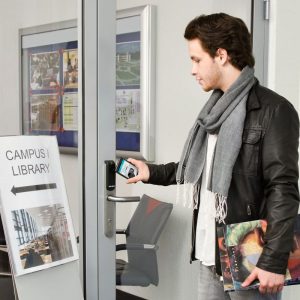Protecting educational spaces
Say good bye to jangling bunches of keys! Modern solutions are improving school security, and simplifying access for staff.

Ensuring the safety and security of students and staff has always been a paramount concern for educational institutions.
Traditionally, schools managed security with methods such as stationary surveillance cameras and jangling carabiners of keys. However, advancements in technology have significantly transformed and streamlined these security measures.
Read the latest print edition of School News online HERE.
New Zealand schools encounter a wide range of security challenges, including unauthorised access, anti-social behaviour such as vaping or vandalism, intruders, medical emergencies, and, unfortunately, incidents of violence. Addressing these issues effectively requires a sophisticated approach to security.
Recent data highlights the gravity of these concerns. In a 2024 report by the Education Review Office, half of the teachers surveyed said that disruptive behaviour has worsened in the past two years, and a quarter of principals have witnessed students physically harming others, damaging property, or taking belongings at least every day. Three out of four teachers (73 percent) experienced students refusing to follow instructions daily, while 40 percent of teachers saw such behaviour every lesson or hour.
In response to these challenges, New Zealand schools are increasingly adopting integrated security solutions that go beyond basic surveillance. Modern security systems now often include access control measures, surveillance cameras, alarms, and advanced communication systems. This integrated approach creates a comprehensive security framework that addresses multiple facets of school safety.
According to the Ministry of Education, “boards should consider a range of measures to increase security at your school”. Perfecting the balance between security and a comfortable, welcoming environment is key to the successful implementation of any new school security system.
One of the significant benefits of contemporary security systems is their ability to be customised and scaled to meet each school’s needs. These systems allow schools to tailor access levels according to roles, remotely monitor school security, and adjust measures as the institution grows or as security needs change.
Effective monitoring of school access points through surveillance cameras, motion sensors, and real-time alerts can ensure safety and detect unauthorised activity. Particularly outside of school hours, monitoring these access points can prevent unauthorised access to school grounds.

Access control systems allow authorised people to move around the campus quickly and efficiently, whilst preventing unauthorised access. Ethan King, Technical Rep – Digital Access Solutions from ASSA ABLOY, said Digital Access Control systems offer schools a smart and adaptable way to manage access for students, teachers, staff, and visitors. “These systems enable centralised control, allowing administrators to grant or revoke access instantly, whether onsite or remotely. This flexibility helps schools respond quickly to changing schedules, emergencies, or temporary events, such as when contractors or visitors need access to specific areas for a limited time.”
A significant advantage of these digital solutions is the elimination of traditional keys. Mr King explained, “By moving to a keyless system, schools reduce the risk of lost or copied keys and gain enhanced security through features like access auditing, which tracks who enters a specific door and when. These systems can then be integrated into broader security frameworks to monitor and control access across various parts of the campus in real-time, providing greater overall control of their security systems.”
“Wireless access control systems provide a flexible and cost-effective solution for securing school campuses,” added Mr King. “Unlike traditional wired systems, wireless installations are far less disruptive and can easily expand to cover additional doors or areas as schools grow. This makes them an ideal choice for schools looking to enhance security without the need for major infrastructure changes, which also helps reduce setup and maintenance costs.”
This article was originally published in the Term 4 edition of School News. Read it online HERE









